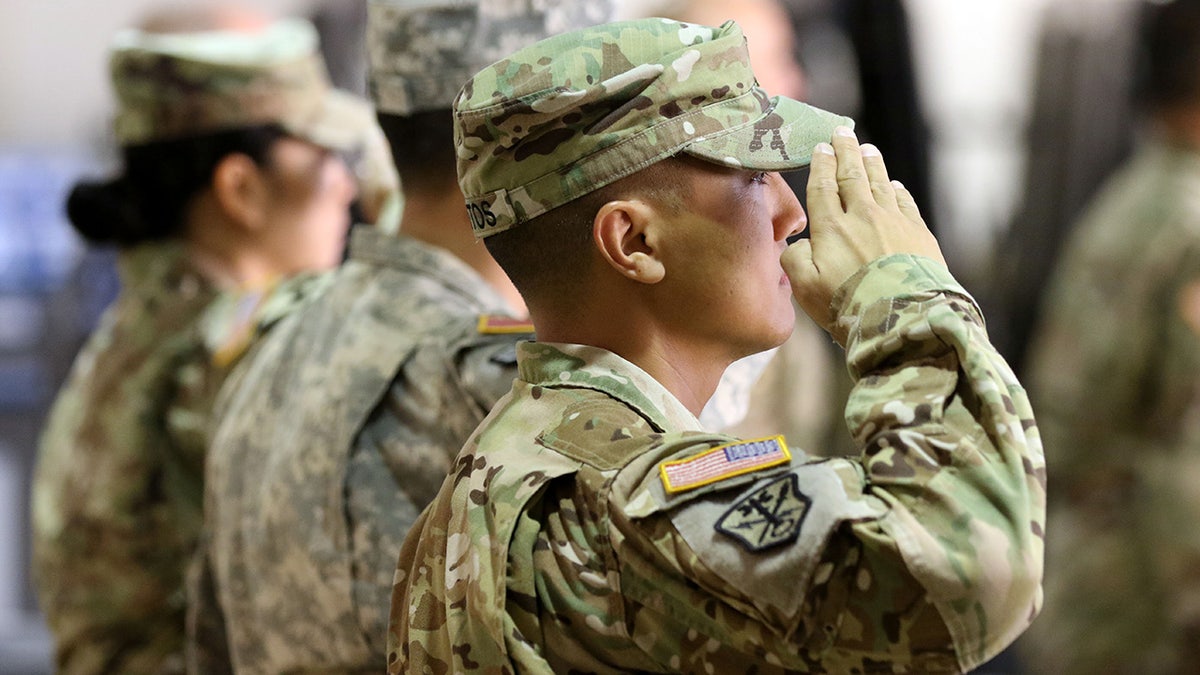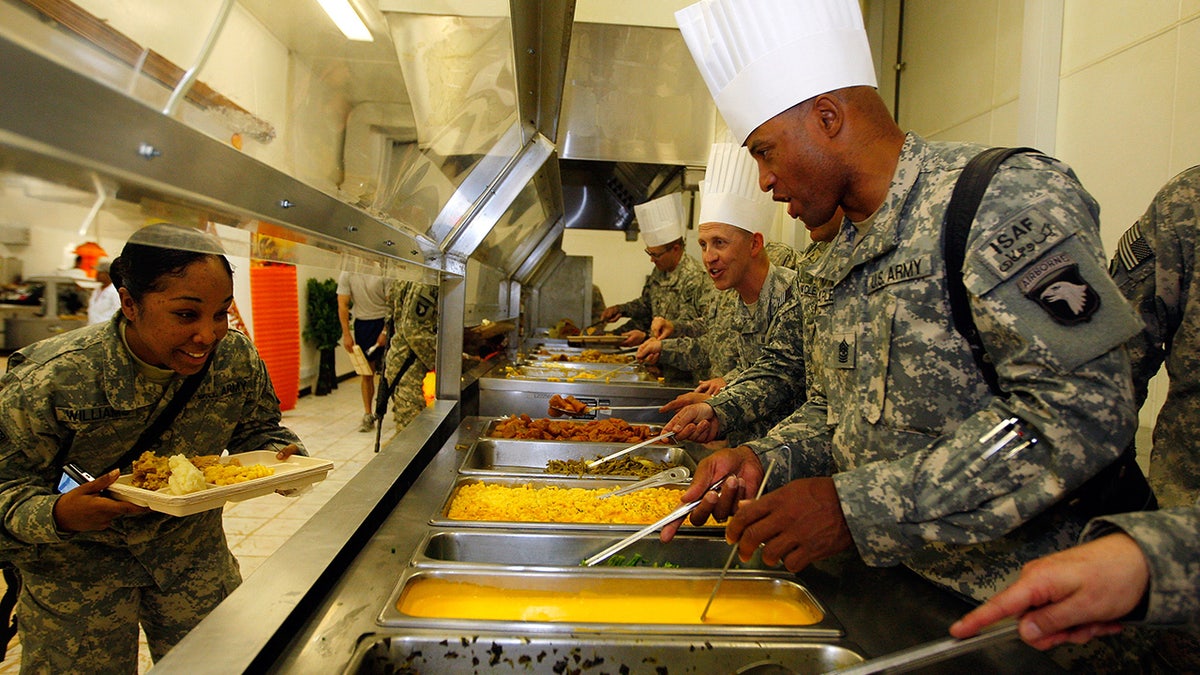Patriotism is what drives recruitment, says former Army physician
Former Army physician Lt. Col. Danielle Smith joins 'Fox News @ Night' to highlight the U.S. Army shattering recruiting levels in December.
The U.S. Army is redirecting millions of dollars it has collected from the Basic Allowance for Subsistence (BAS) pay for soldiers living in barracks away from food services, according to a report.
The money is supposed to help soldiers with food costs, but a Military.com investigation found that of the $225 million collected from enlisted soldiers’ BAS pay last year at 11 of the Army’s largest bases, $151 million was directed elsewhere.
Enlisted soldiers receive around $465 dollars in BAS each month, according to the U.S. Army's website, and what is essentially a tax on troops, is taken from that, the outlet reported.
"It's just returned to the big pool of Army funds, and it's used someplace else," an official told the outlet of the redirected BAS pay in an interview that was scheduled by the Army public affairs office.
SIX DEADLIEST NON-COMBAT MILITARY AVIATION ACCIDENTS IN THE LAST 5 YEARS

The U.S. Army is redirecting more than half of the money it collects on the Basic Allowance for Subsistence (BAS) pay for soldiers living in barracks, according to a report. (U.S. Army National Guard photo by Spc. Matthew A. Foster)
The official, who asked to remain anonymous, had direct knowledge of the situation.
The outlet’s investigation found that all but two of the bases they looked into – Joint Base Elmendorf-Richardson in Alaska and Fort Bliss in Texas – had redirected more than 50% of the money away from feeding soldiers.
It’s not clear what the redirected money is being spent on.
Rep. Jill Tokuda, D-Hawaii, said the data should be investigated.
"Stealing food money from our soldiers is not how we achieve military readiness," Tokuda told Military.com. "The fact that at least $151 million was collected from soldiers and not spent on food as required demands not just an immediate investigation, but swift accountability."
In 2020, Rep. Tim Ryan, D-Ohio raised the issue with then-Army Secretary Ryan McCarthy at a budget hearing, saying, the Army is either "wasting half the food, or the money is not being spent on the soldiers' food and it's being spent on something it's not appropriated for."

US Army senior officers serve up the food to military personnel in the dining hall to celebrate Thanksgiving Day at the US military forward operating base (FOB) Camp Salerno near Khost on November 27, 2008 in the south eastern province of Khowst, Afghanistan. ( Paula Bronstein/Getty Images)
The question, which came just before the COVID-19 pandemic hit, wasn’t followed up on.
Food service worker salaries and dining hall infrastructure funds come from separate source, the outlet noted.
The Army has struggled to provide meals for soldiers in recent years, the outlet reported, noting that its most extensive base, Fort Cavazos in Texas, only had two of its 10 dining halls open in the summer of 2023 and last November, Fort Carson in Colorado was forced to serve soldiers meals of just lima beans and toast.

U.S. Army trainees eat lunch in the field while going through basic training at Fort Jackson on September 29, 2022 in Columbia, South Carolina. (Scott Olson/Getty Images)
Some bases have also started serving prepackaged meals from kiosks – that the outlet found were generally high in sugar and low in protein – a cheaper alternative to cooked dining hall meals.
Spokesperson Maj. Andrea Kelly told the outlet that the number of meals was calculated "based on previous head counts" at base dining halls.
CLICK HERE TO GET THE FOX NEWS APP
Officials in the past have pointed to lower interest in dining hall meals as soldiers frequently report undercooked meat, a lack of fresh ingredients, and unseasoned meals being served there.
Army Spokesperson Maj. Andrea Kelly in a statement told Fox News Digital: "Congress appropriates the amount of funds required to provide all meals to all Soldiers under Essential Station Messing. However, the Army does not receive that full amount; instead, it only requests and receives the amount of funds needed to feed the projected number of meals, based on previous headcounts, for ESM Soldiers who actually visit and eat at the dining facilities. Per DODD 1418.05, collection under ESM is for all meals made available whether eaten or not."
"In fact, the raw food cost per Soldier can be more than what is collected," Kelly continued. "If a Soldier were to consume all meals in a 30/365-day timeframe, the cost to the Army would be higher than the amount collected because the Basic Daily Food Allowance ($19 per day, or $570 per month), which is set by US Department of Agriculture and provided to Services by Defense Logistics Agency, is greater than the reduced meal rate. BDFA is higher than the Discounted Meal Rate (currently $13.30/day) that is recouped from ESM Soldiers’ pay."
She continued: "From a Soldier’s perspective, those under ESM will see $465.77 in the entitlements section of their monthly Leave and Earnings Statement, a figure based on the full monthly Basic Allowance for Subsistence, whether or not the Soldier eats every meal at the dining facility. The amount in the deductions section (about $400) is different because it is based on the Discounted Meal Rate."
"DFAC utilization rates are associated with the quality of the experience and Soldier preferences," Kelly added. "Based on recent trends and research, the Army is modernizing the way it feeds Soldiers. We are committed to providing Soldiers with food options that are healthy, convenient and accessible, and to providing options that allow Soldiers to eat when, where and what they want."






















